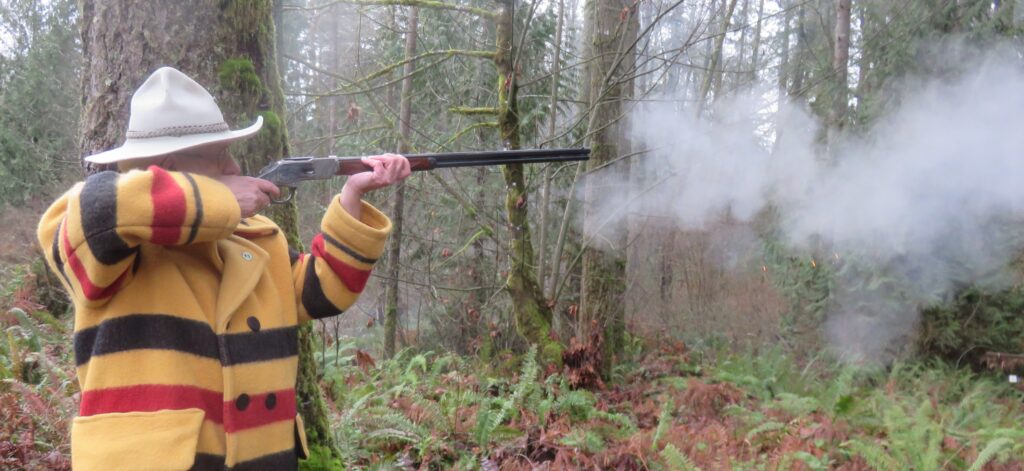
By Mike Nesbitt | Contributing Editor
There seems to be many questions about black powder, both about its use and availability today in addition to how it was purchased and used on the frontier years ago.
One thing we can say about black powder is that it really hasn’t changed, at least not very much. So, any good look at black powder should really begin with some explanations.
First of all, and this is a big one for us today, black powder is a Class A explosive. The definition for that simply means that black powder can be ignited by a spark. Identifying it as a Class A explosive has nothing to do with how powerful it might be, and as an explosive black powder is a rather low-grade explosive, not very powerful. The Class A classification only refers to its ease of ignition.
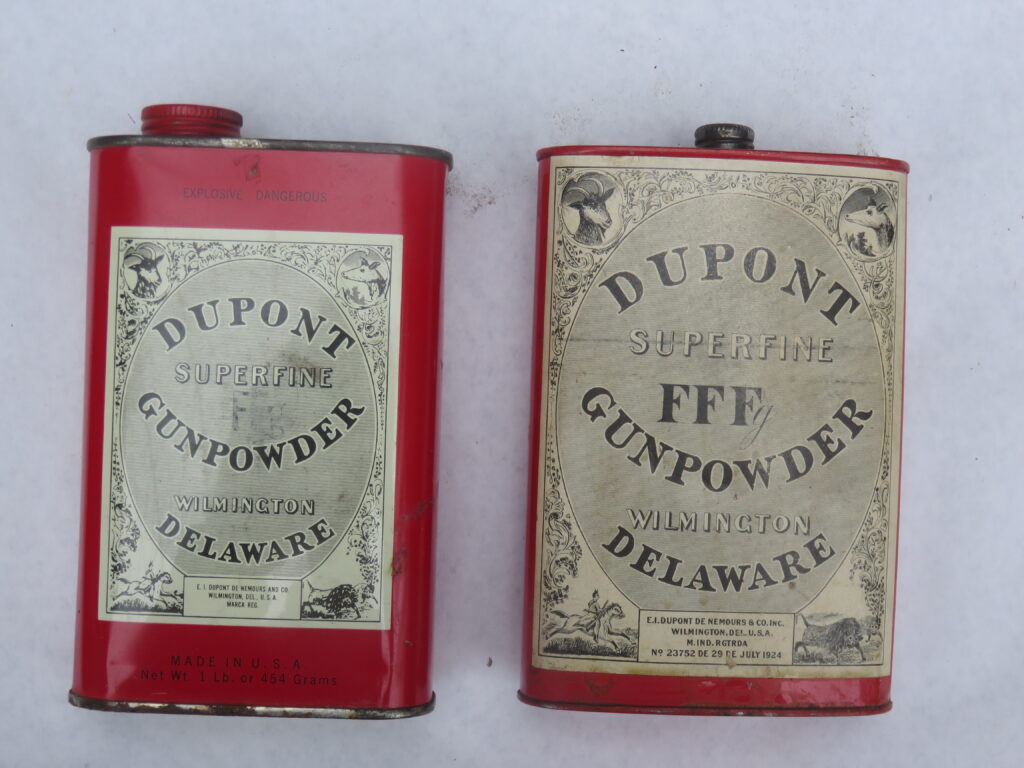
That is why, specifically, the black powder substitutes, which are listed as Class B explosives, such as Pyrodex, will not work satisfactorily in flintlocks. Flintlocks use nothing but a spark, cut from the steel frizzen by the flint, to ignite the powder in the priming pan. Any priming powder that can’t be ignited by a spark simply won’t cut it.
But it is that Class A explosive listing that is keeping black powder off of the shelves in most sporting goods stores and gun shops. There are rules and restrictions on the care, handling, and storage of black powder that makes too many retail outlets simply not want to mess with it.
So, how do we get black powder for our hunts and shoots? Easily enough, actually, but it takes some cooperation. For instance, at our club, when some of the shooters need black powder, let’s suggest five of them or more, they’ll pool their resources and buy a full case of 25 pounds. After the powder is delivered, they’ll divvy it up to, let me suggest, five pound per shooter.
That’s a rather convenient way of getting a fair supply but it does take a little advance planning. Another advantage to buying black powder by the case is that it usually comes with a bit of a discount when compared to trying to buy the powder one pound at a time. Sometimes, if we have a trip, which takes us in the vicinity of a powder distributor, we’ll make special arrangements to stop in and pick the powder up, which can save us the shipping costs as well.
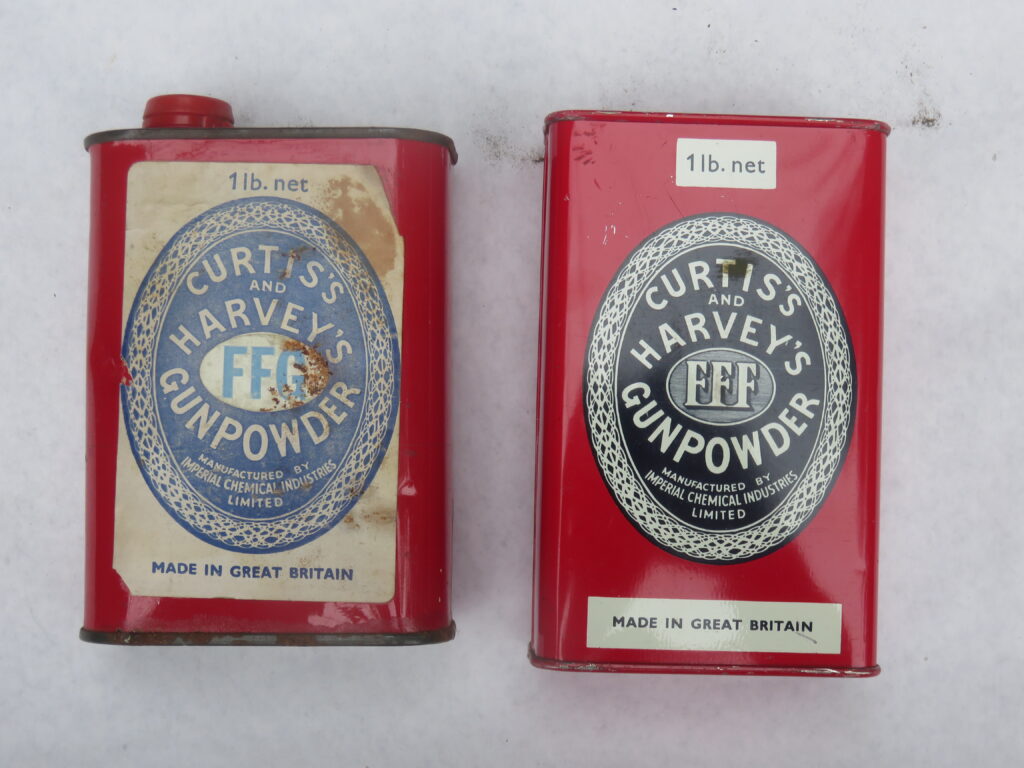
In addition to that, black powder, like gold, is where you find it. On one of my business trips to Spokane, about 40 years ago, I stopped in at a sporting goods store, which I knew carried black powder. They were allowed to display only five pounds at a time, which they stocked their shelves with each morning. When I got there, about lunchtime, they had three pounds left, which I quickly bought.
But then one of the store’s owners recognized me and took me aside to ask if I wanted more powder. I quietly said “yes” and then waited to find out what he was offering me. It turned out that the distributor had just sent them 50 pounds; 25 pounds of 3Fg and another 25 pounds of 2Fg, in two cases.
But instead of being in one-pound cans, this powder had mistakenly been sent in two 25-pound bags. The store had no easy way of selling the powder and it was too costly to send the powder back. So, I was offered the powder at the dealer’s price, which I accepted very quickly. Back at home, that powder was divvied up and poured into one-pound cans to be spread around to other members of our club, sharing the good deal while also giving me the cash to cover my credit card bill.
Buying the black powder is one thing. Storing it is another. An individual can buy up to 50 pounds of black powder at one time under Federal Law. But then storing that powder falls under local laws, perhaps State, County, and City regulations. Because each locality might have different restrictions, all I will say is you should know your laws so you can stay out of trouble.
Many years ago, I had a good friend who was a rancher in Oregon. He built a dandy powder magazine for his shooting club, utilizing an old horse trailer, which was lockable and parked a full half of a mile away from the ranch house and any buildings. That seemed to work very well and I’m only guessing that it satisfied local requirements quite easily.
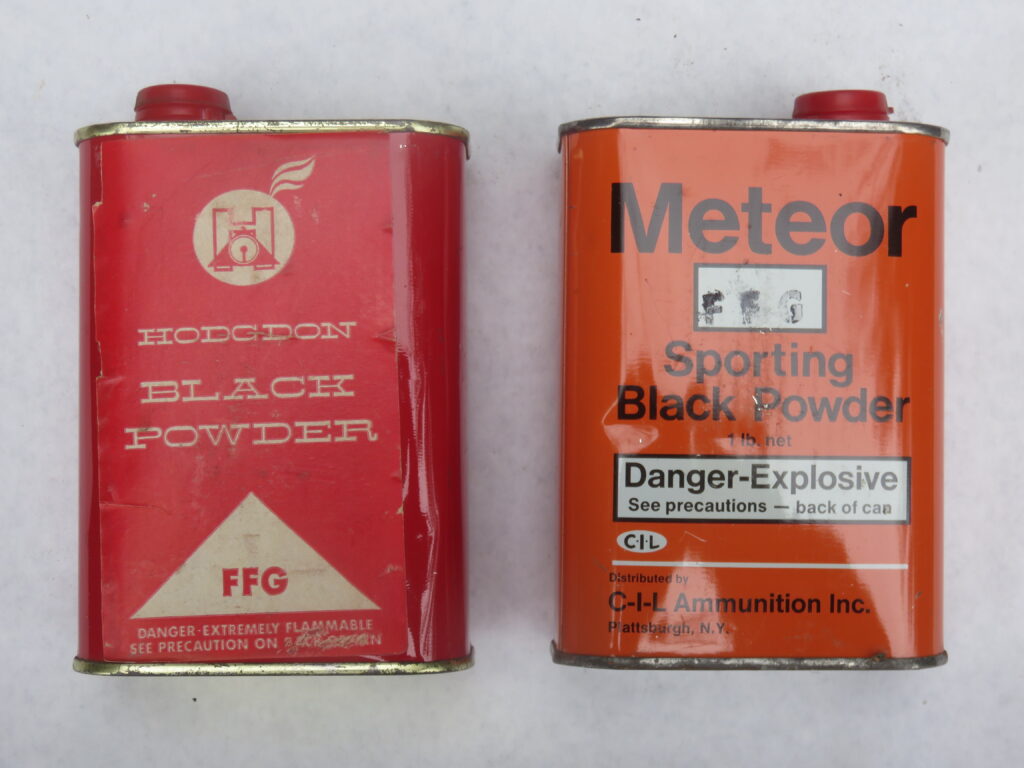
There might have been restrictions on powder back in the frontier years, like there were for whiskey, but just like with the laws covering whiskey, they would have been very hard to enforce. The best glimpses I can get about powder back in those times are in the descriptions of getting the outfits together to go on buffalo hunts.
In 1875 John Cook, author of “The Border and The Buffalo,” helped put together an outfit which was to last them three months on the buffalo range in Texas.
For reloading, they took 250 pounds of lead in bars and bundled in 25-pound sacks, 4,000 primers (Berdan style in those days), and DuPont powder. The powder was in three 25-pound cans plus one more 6-pound can, making 81 pounds. That’s a fair amount of supplies and the author mentions how that seemed to be what most of the outfits were taking for the hunts.
Another glimpse into the past comes from Frank Mayer in his book called “The Buffalo Harvest.” Mayer mentions how there were two leading brands of American made powder then, DuPont and Hazard. (Actually, there were more than that.) Mayer goes on to admit that he preferred the English-made Curtis’s & Harvey’s powder, which he would purchase from Tryon in Pennsylvania, paying 50 percent more for it than the going rate for DuPont. His report details how the Curtis’s & Harvey’s powder burn more moist, leaving a softer fouling in the barrel.
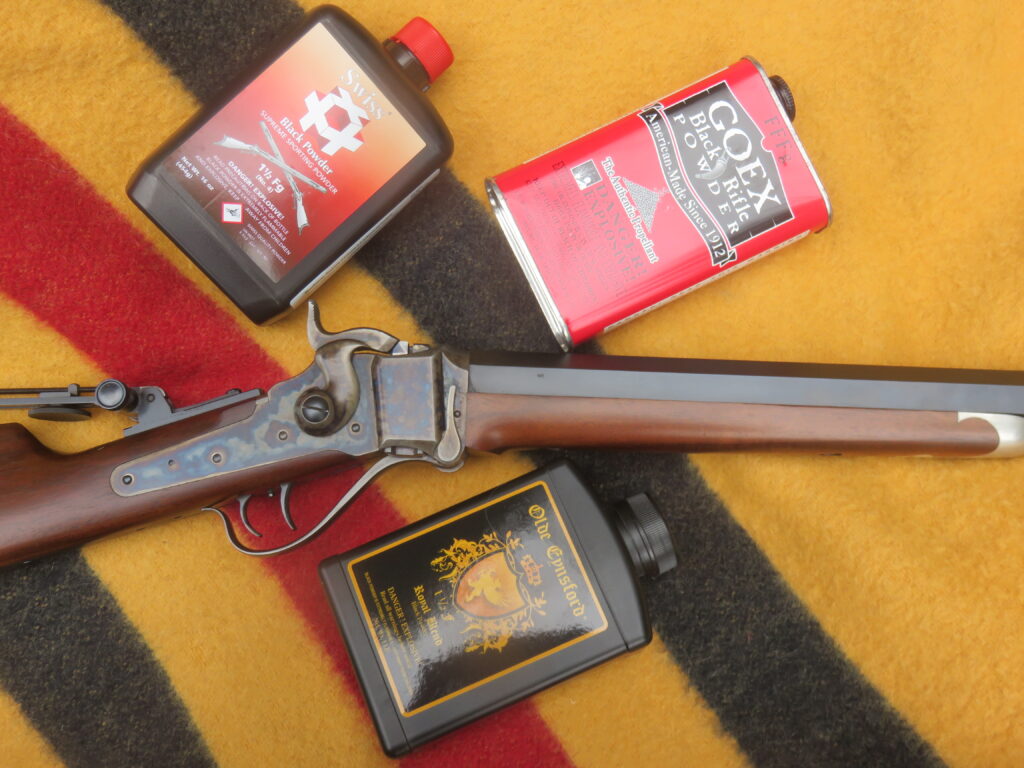
Personally, I’ve used a lot of Curtis’s & Harvey’s powder and I always liked it. For a while, in the early or mid-1970s, Curtis’s & Harvey’s powder is what kept our black powder shooting sports going. DuPont had shut down their black powder plant and it was Hodgdon who came to our rescue, so to speak, by offering re-labeled Curtis’s & Harvey’s black powder. In Canada some re-labeled Curtis’s & Harvey’s powder was also sold about the same time and that was in cans bearing the “Meteor” name.
Of course, Curtis’s & Harvey’s had various grades of black powder. Steve Garbe, of SPG Lube fame, used some of it; also back in the ‘70s, which he didn’t like. Then later he was lucky enough to buy a fair supply of Curtis’s & Harvey’s Diamond Grain powder which was very good. I wish more of that would come my way…
Incidentally, the lower case “g,” seen often with FFg to depict the powder’s granulation size, stands for “graphited.” In the 1850s, I believe, DuPont began to offer graphite coated black powder to the military. The graphite coating was intended to keep the powder drier in high humidity areas. Powders with the graphite coating, over the years, became the standard and for quite a while shooters had their choice of using either graphited or non-graphited powders.
Today’s Olde Eynsford black powders are not identified with the lower case “g” in their granulation indication. At first, I thought that powder was not graphited, and said so in at least one published story. But then I was corrected by a spokesperson at GOE. Olde Eynsford powder is graphited even though the small “g” is not used on their powder identification.
One of the misunderstandings about black powder is that it is not too hazardous to handle. One time an experienced shooter, who is experienced in fields other than black powder, commented to me, “You shouldn’t reload with black powder, that stuff explodes!” Well, it doesn’t explode, or it hasn’t yet for me. Black powder must be handled with common sense, certainly, just the same as all gunpowders.
With this short look at black powder, I don’t know if I’ve answered any questions or simply created more. Nothing specific was really mentioned here and we’ll save more direct and specific comments for loads with individual calibers in both muzzleloading and black powder cartridge arms. In today’s world, black powder is shot for the fun of it and you will never know how much fun it is until you try it.



